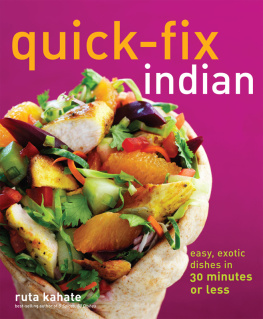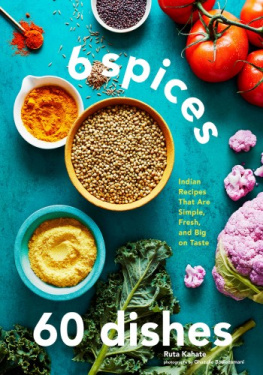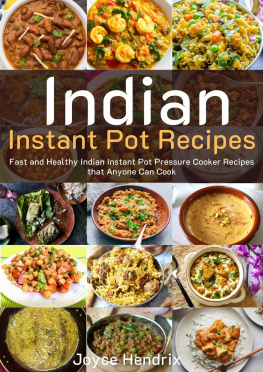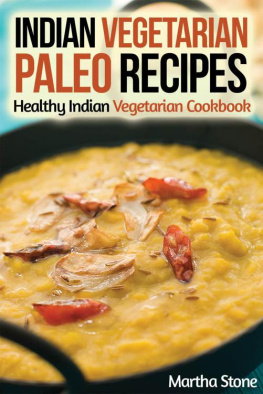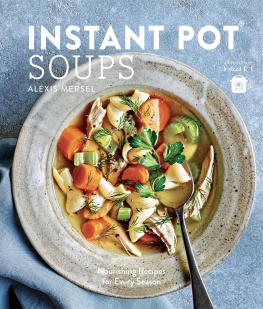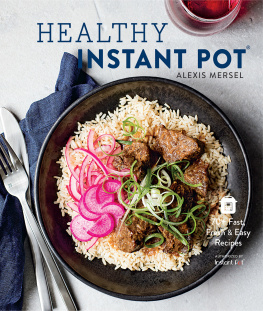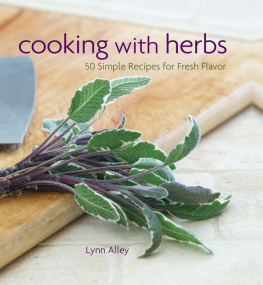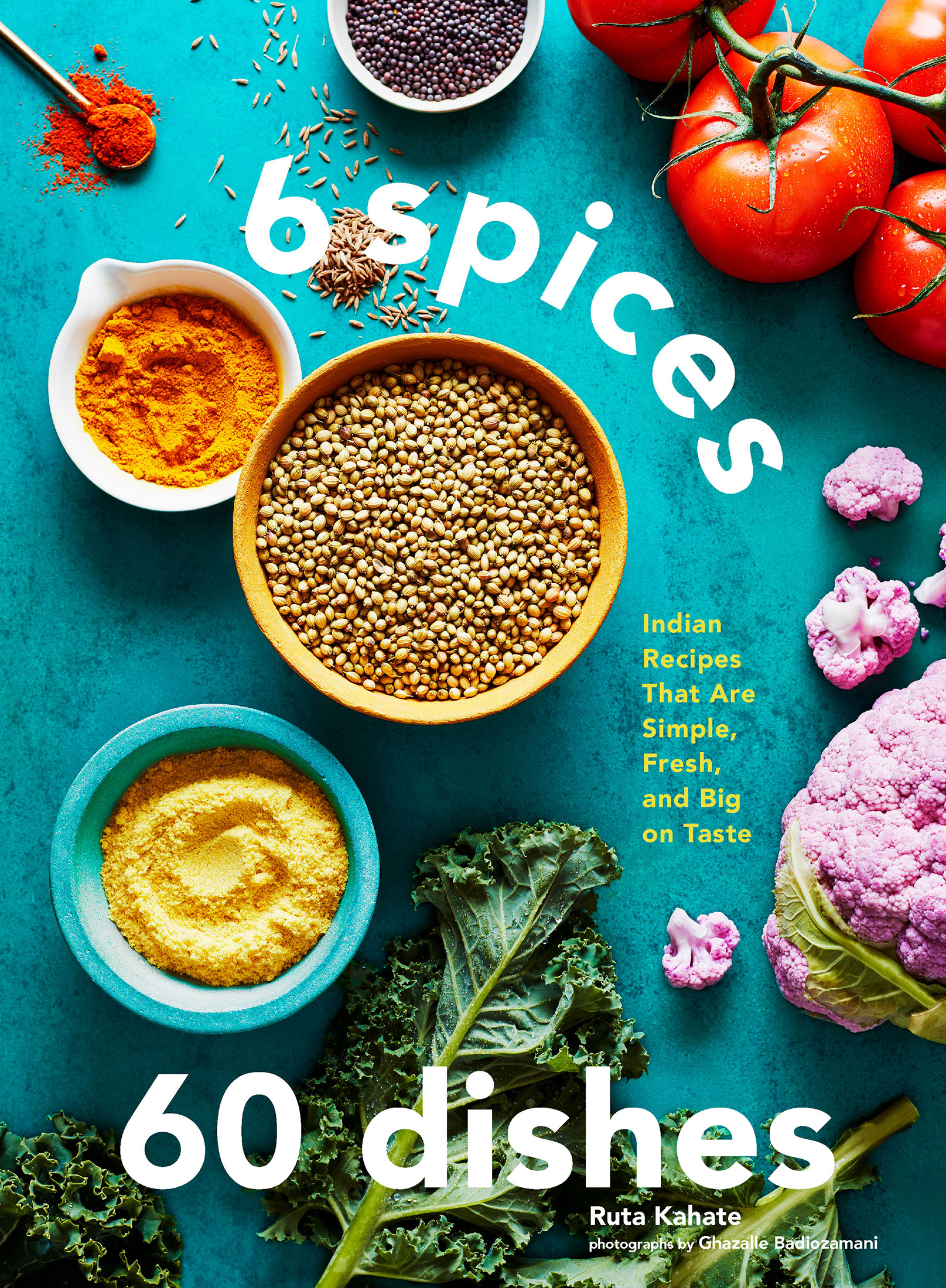Contents
Guide
Pagebreaks of the print version



Text copyright 2023 by Ruta Kahate.
Photographs copyright 2023 by Ghazalle Badiozamani.
All rights reserved. No part of this book may be reproduced in any form without written permission from the publisher.
Library of Congress Cataloging-in-Publication Data available.
ISBN 978-1-7972-1621-8 (epub, mobi)
ISBN 978-1-7972-1620-1 (hardcover)
Design by Vanessa Dina.
Food styling by Jesse Szewczyk.
Typesetting by Frank Brayton. Typeset in Avenir.
Amazon is a registered trademark of Amazon Technologies, Inc.; Diamond Crystal Salt Co. is a registered trademark of Cargill, Incorporated; Instant Pot is a registered trademark of Instant Brands Inc.; Paul John is a registered trademark of M/s. John Distilleries Private Ltd.
Chronicle books and gifts are available at special quantity discounts to corporations, professional associations, literacy programs, and other organizations. For details and discount information, please contact our premiums department at corporatesales@chroniclebooks.com or at 1-800-759-0190.
Chronicle Books LLC
680 Second Street
San Francisco, California 94107
www.chroniclebooks.com
This book is for my intrepid little family:
my husband, Neville, and my daughters, Mira and Lola, three amazing individuals in their own right, yet who are always on board for every crazy adventure I dream up.

My Crazy Culinary Journey
My father was the head of the India Government Mint, overseeing the countrys vast supply of coins. Every few years, hed be transferred to a different branch of the mint: Delhi in the north, Hyderabad in the south, Calcutta in the east, and Bombay in the west. Growing up in the four corners of India made a deep impression on me, especially since our family always dove headlong into the local cuisine.
We werent a typical Indian family; everyone cooked at home, my father included. And my iconoclastic mother would happily break every rule of traditional Indian cooking and achieve amazing results. Many of her techniques, such as minimal intervention, flash-cooking leafy greens, and a lighter touch with spices, sauces, and oils, still inform my cooking today.
Like my brother, I learned to cook early on, but what I really wanted to do was fly. Dreaming of becoming Indias first female aviator, I moved to the San Francisco Bay Area to attend a flying school. I got my pilots license but ended up navigating the incredible food scene instead. I worked at French and Italian restaurants, ran my own Indian cooking school, led culinary tours to India, and wrote my first cookbook, 5 Spices, 50 Dishes .
When my two little girls, Mira and Lola, were born, we decided to go on an adventure before school calendars could take over our lives. We sold our house in Oakland and moved to Goa, a tiny tropical paradise on Indias west coast. Theres no better place to slow down than this ex-Portuguese colony, where everything closes for the afternoon siesta. But the problem is, I dont slow down. So I started and ran six cafs of all shapes and sizes: from a one-hundred-seater casual eatery to a tapas bar shack on a stunning white-sand beach. It wasnt easy getting all the produce I needed, so I grew my own, up on a hill in my mother-in-laws village. I planted tropical things such as bananas, squash, and amaranth, but also the things I missed, such as arugula and butternut squash. Anything the pigs, peacocks, and porcupines didnt gobble up went straight to my cafs.
We ended up staying ten years in Goa, learning the local cuisine: not quite Indian, not quite Portuguese, but amazing just the same. During that time, I saw how India and its food were rapidly evolving around me. A thriving food blogger community emerged, focused on regional Indian cooking, which hadnt seen the light of day before social media. People were abandoning the big cities in droves, seeking Goas clean air and a simple, creative lifestyle. Our neighbors included yoga teachers and cheese makers, musicians and sausage makers, writers and chocolatiers. The local fish thali lunch places and multicuisine joints were joined by vegan cafs, regional Indian eateries, and fine dining restaurants run by food professionals, both Indian and foreign. The boring liquor scene was transformed by microbreweries, small-batch gin makers, and world-class single malt whiskys like Paul John.
It was a wild ride, interrupted once again by my perpetual wanderlust. And now Im in Milwaukee, Wisconsin, on the shores of Lake Michigan, where I run a lively little eatery called Rutas. We serve Indian-inspired caf fare to a bunch of truly amazing, appreciative customers. And as always, Im learning. While Im delving deeper into regional Indian food, Im also investigating Midwestern farming communities and local produce to find that meeting point where culinary magic happens.
And, of course, I wrote this book, building on all my experiences but staying true to my tried and tested recipe: extracting great Indian flavors with minimal effort.
How lucky I am to be able to keep discovering, learning, and creating within this amazing genre!

One New Spice; a Whole New Book
In my first cookbook, 5 Spices, 50 Dishes, I challenged the popular belief that Indian food is difficult to make. And I demonstrated how to create complex-tasting dishes using a few commonly available spices and quick-cooking techniques. Deep flavors with minimal fuss. This simple-yet-not-simplistic approach apparently struck a chord, judging by the response my little book received.
In the years since 5 Spices was written, the world has gotten even smaller. Turmeric is now a household word, even being blended into smoothies. Grains common to rural India like sorghum and amaranth, coconut and sesame oils, mango and jackfruit, all kinds of beans and pulsesthese are no longer exotic. Your supermarket probably stocks multiple brands of ghee, and your kitchen most likely has an Instant Pot (what my mother calls a modern pressure cooker).
For this cookbook, I wanted to highlight a sixth spice in addition to the original five. There were so many amazing contenders, but in the end I went with asafetida because of its legendary ability to transform dishes. And also because its now widely available in the Western world.
The mainstreaming of Indian ingredients provides a great opportunity to open things up and give you more variety in the recipes. But I also used a few non-Indian things like kale and parsnips, faves in my own home kitchen. Purists may huff, but these nutrient-dense leafy greens and roots remind me of similar vegetables in India. They respond to my techniques in the same manner as the more traditional fareand end up tasting every bit as Indian.
Which brings me to a question Im often asked by Westerners: Are these authentic Indian recipes? My answer is that every Indian home cook has their own version of any particular dish, learned from ancestors, neighbors, and even the internet. Whose version is authentic? Blood feuds have been fought over this question, because each cook is firmly convinced that their version is better and more authentic than anyone elses! To keep the peace, this cookbook includes some recipes that are traditional, and some that are updated or with a contemporary twist. Rest assured, they are all Indian.


